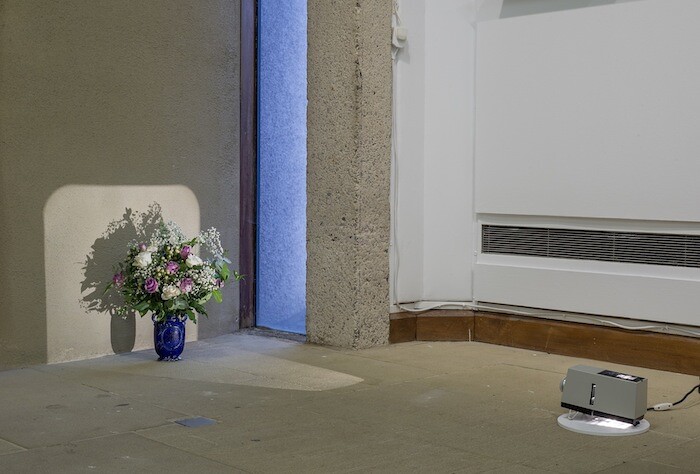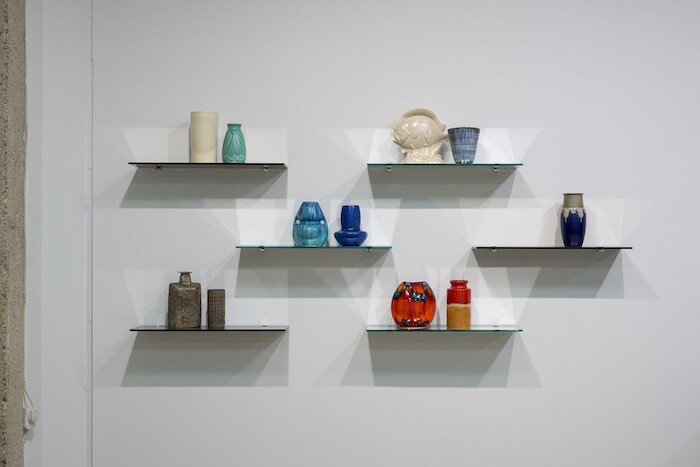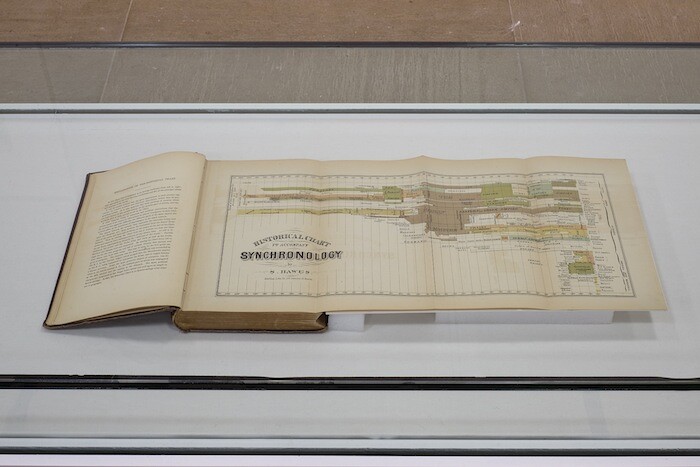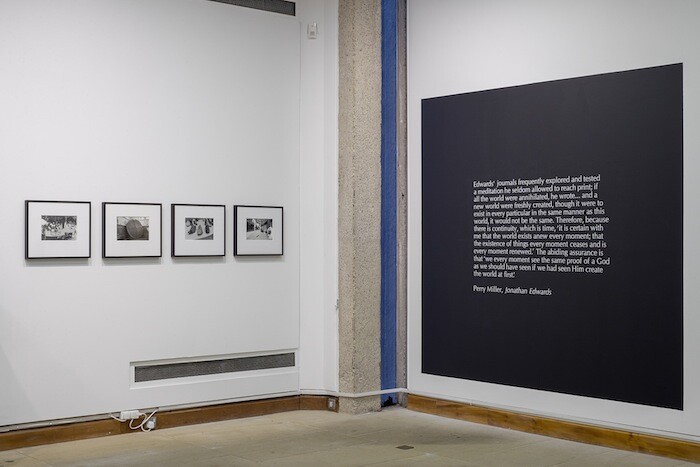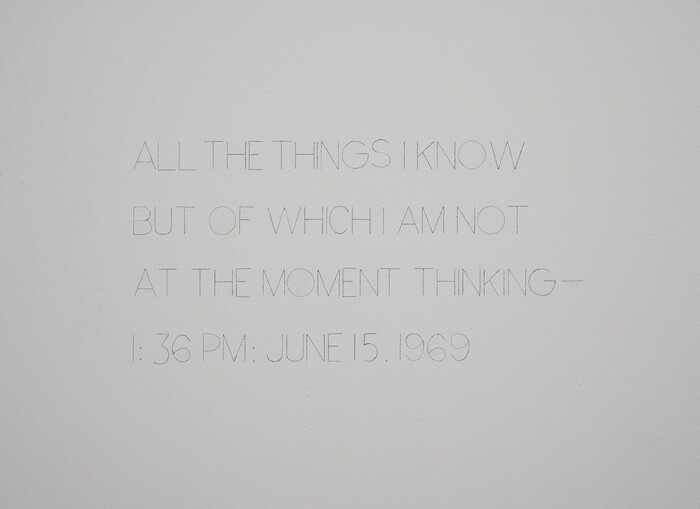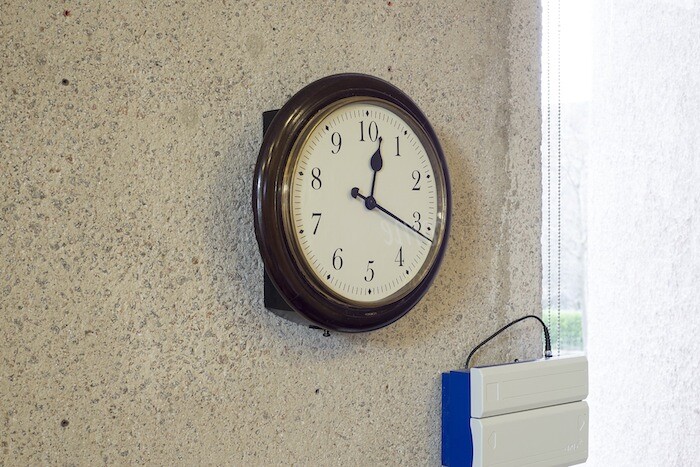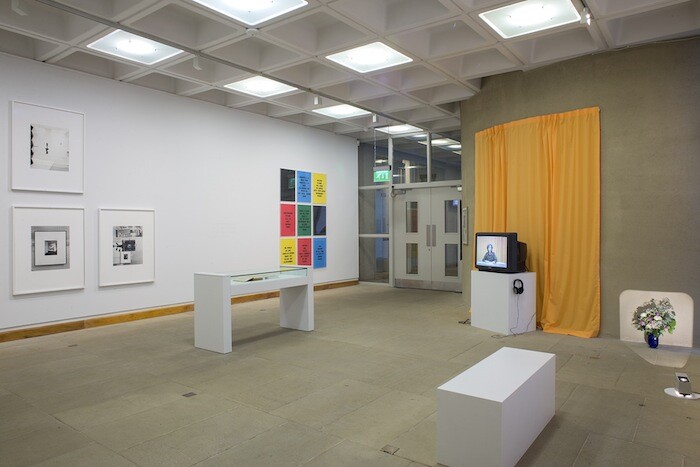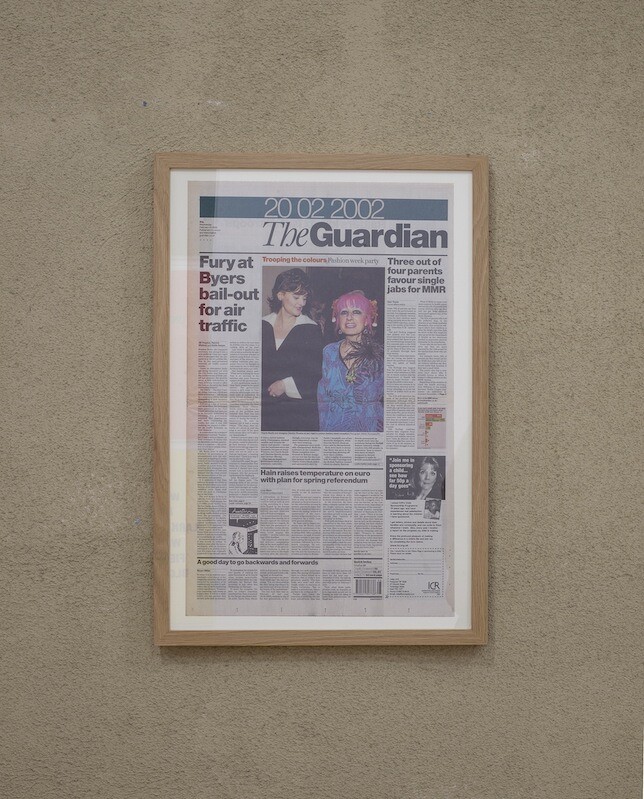Flowers fade at different rates. In the November chill of a Glasgow art gallery, cut flowers—carefully arranged in a vase on the floor, their silhouette cast against the wall by the light from a projector—are taking their time to die, or to appear dead. (When exactly do cut flowers die?) At a certain moment of decay, a new vase will be selected from a nearby glass shelf, and a florist will arrange another bouquet, precisely styled to match the historical period of the vase that will contain it. This process has been set in motion by artist Corin Sworn and forms a work called Temporal Arrangements (2010). The vases come from Sworn’s own collection. The projector, I’m told, came from Yugoslavia—a country that no longer exists.
The multiple temporalities that Sworn’s work draws attention to form the irregular heartbeats of “A Synchronology,” a group show at Glasgow’s Hunterian Art Gallery. The exhibition, curated by art historian Dominic Paterson, is itself a temporal marker: it has been conceived to celebrate the tenth anniversary of The Common Guild, a Glasgow-based arts organization which runs a gallery in the city and commissions off-site projects including, in 2013, “Scotland + Venice” at the 55th Venice Biennale. That exhibition also featured work by Sworn: each of the nine artists in “A Synchronology” have worked with The Common Guild over the past decade.
But the exhibition’s starting point, and the source of its title, is not an artwork, but a diagram from a nineteenth-century book by Stephen Hawes. A copy lies open in a vitrine in the gallery: the second printing (1871), we’re informed deliberately, of Synchronology of the Principle Events in Sacred and Profane History from the Creation of Man to the Present Time. Across four unfurled pages is a color-coordinated diagram that attempts to chart the “rise, progress and fall of nations.” But it is the accompanying text to the left that fascinates me. “In this chart,” the text explains, “time is supposed to be flowing uniformly from left to right…” For it is the slippery meaning of “supposed” that underpins my experience of “A Synchronology”: not only descriptive of the chart’s methodological limitations but also prescriptive of the way time ought to function (and never quite does).
Across the exhibition, time does not flow uniformly from left to right. Instead, it loops, breaks, judders, repeats. There is no linear visitor journey: the gallery is a single room and, upon entering, you can see everything at once. But it takes time to orient yourself in relation to complex works grouped quite close together. Initially, I found myself circling anti-clockwise—perhaps due to a curve in the otherwise rectangular gallery—then stopping, backtracking, turning away, my gaze caught by something else nearby.
In one corner, Gerard Byrne’s Images or Shadows of Divine Things (2005-ongoing) includes a wall text that quotes Puritan historian Perry Miller, in turn quoting Protestant theologian Jonathan Edwards: “it is certain with me that the world exists anew every moment; that the existence of things every moment ceases and is every moment renewed.” Alongside are four black-and-white photographs that seem to come from one era, but date in fact from another. To your right as you face Byrne’s text, another wall drawing, Robert Barry’s All the things I know but of which I am not at the moment thinking – 1.36pm, June 15, 1969 (1974), recalls a specific instant but here through the recreation of the work nearly 50 years after its designated date. It is the “earliest ‘contemporary’ piece in the show,” notes Paterson in the exhibition’s accompanying leaflet, deftly drawing attention to the complexities of whatever we mean by “contemporary” art.
Perhaps unsurprisingly, politics are never far away: behind the reception desk is Ruth Ewan’s We Could Have Been Anything We Wanted To Be (2011), a clock that only goes up to ten, in echo of the decimalization of time following the French Revolution; Sharon Hayes’s ten-hour video shows the artist reading out all of Ronald Reagan’s addresses to the American people (My Fellow Americans, 2004); and Phil Collins’s Hero (2002) consists of a genially boozy interview with a fashion reporter in the wake of 9/11. Sometimes the greatest political moments are quickly forgotten; sometimes the most trivial cast the longest shadows. In this context, the documentation of Tacita Dean’s Palindrome (2002) feels strangely reassuring. Noting in advance that February 20, 2002 would read the same backwards as forwards (20.02.2002) Dean redesigned the front pages of five newspapers to foreground the human notation of time. On display is a copy of The Guardian from that day, its front page speaking of “controversy,” “fury,” “crisis,” and a loss of public trust in the words of politicians. That the specifics of each story have long since faded from public attention perhaps speaks not only of the short attention span of the news media but also of the ease with which we overstate the drama of “our contemporary moment.” Fifteen years on, the fury has died down, the controversy is forgotten. Soon someone will come again to replace even these fading flowers—right?

